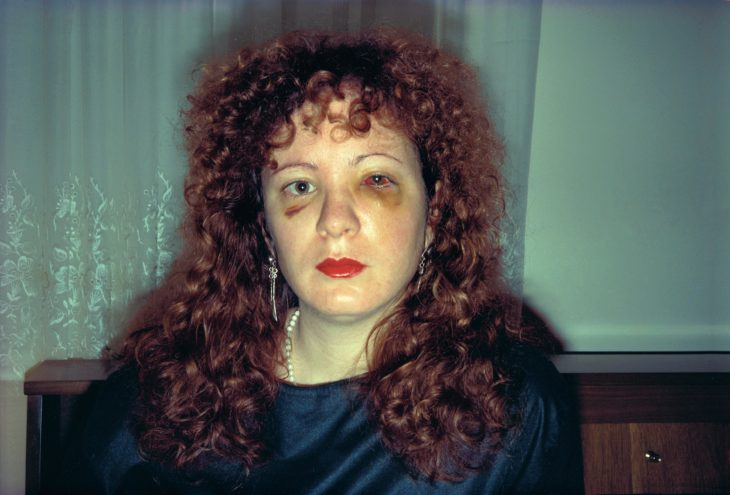
Nan Goldin
Nan Goldin was born in Washington, D.C. on September 12, 1953, and is a photographer and activist. Goldin began photographing at the age of fifteen, and when she was nineteen she lived in downtown Boston, where she started documenting her life in the subcultural community she made home, ultimately solidifying her interest in photography. In 1978, she moved to New York, where she continued the documentation of people she spent time with, driven by her need to remember her ‘extended/chosen family’.
Goldin’s work documents her life and the lives of these people close to her in a tableaux, uncompromising manner, showcasing stories and intimate details of their lived experiences. Goldin explores the intimate emotions of the individual, in relationships, and in LGBTQ subcultures, where her beginning interest in photography was found in her loved ones who were drag queens, and she admired them for stepping outside of societal and gender norms. These photographs she took during this time and earlier were included in her first book which compromises fifteen years of work, ‘The Ballad of Sexual Dependency’. This book is a very personal depiction and documentation of her life from 1979 and 1986, and the photos hold a raw intensity which feels spontaneous. She stated about her way of capturing these moments; ‘I don’t select people in order to photograph them; I photograph directly from my life. These pictures come out of relationships, not observation.’ With her photographs, she is able to capture the world without glamorisation or glorification, and preserve the sense of peoples’ lives, to make those in the pictures stare back.
In the afterword from 2012 of this book, Goldin has expressed her view on this time of her life, describing it as distressing to look back on, and almost encapsulated with a sense of paranoia about people denying her experiences. ‘I was going to leave a record of my life and experience that no one could rewrite or deny.’ She then states that; ‘it became a more obsessive kind of documenting’. These photographs also act as a way to remember those who have passed since documenting these events. She closes this afterword with; ‘I look at Ballad and see the dynamics of both love and hate, tenderness and violence, as well as all kinds of ambivalence in relationships.’
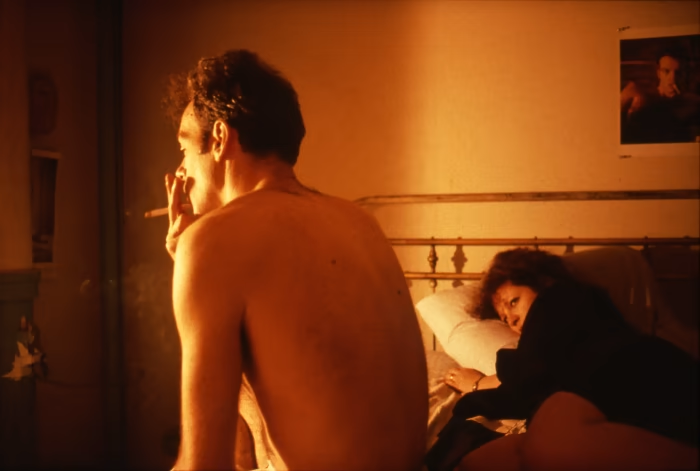
In Nan Goldin’s work around this time, her photos were dominantly taken inside and by night, they embodied a sort of ‘snapshot aesthetic’, where the subject matter is often presented without an apparent link within the images and instead rely on the juxtapositions and disjunctions of the individual photos. Goldin stated; ‘That series is stark. It’s all flash-lit. I honestly didn’t know about natural light then and how it affected the colour of the skin because I never went out in daylight.’
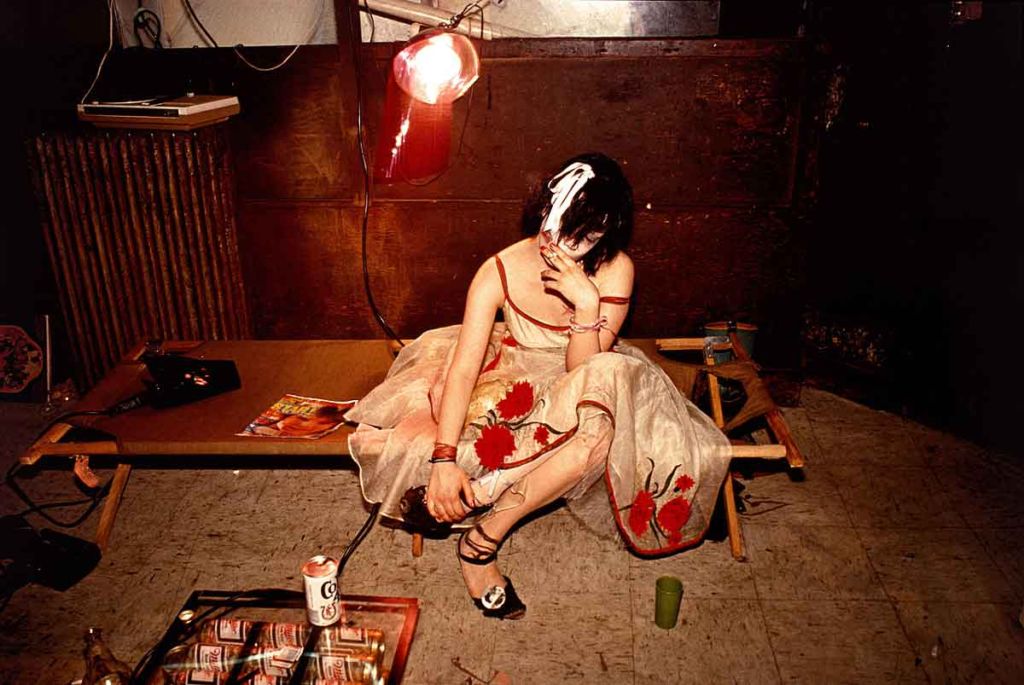
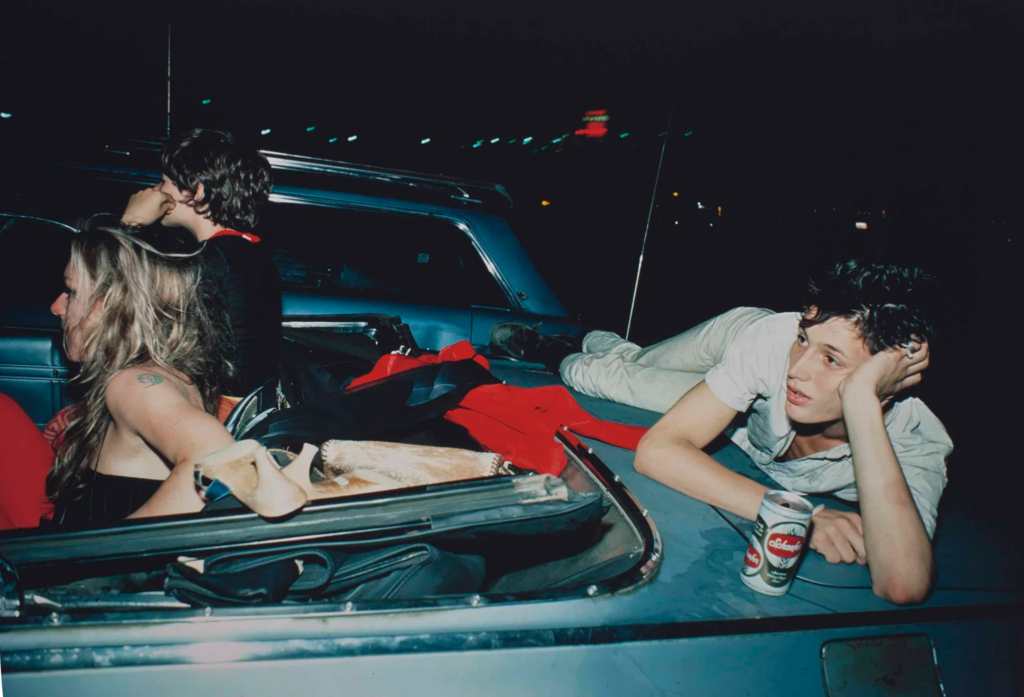
Photo Analysis – ‘Nan and Brian in bed’, Nan Goldin, 1983
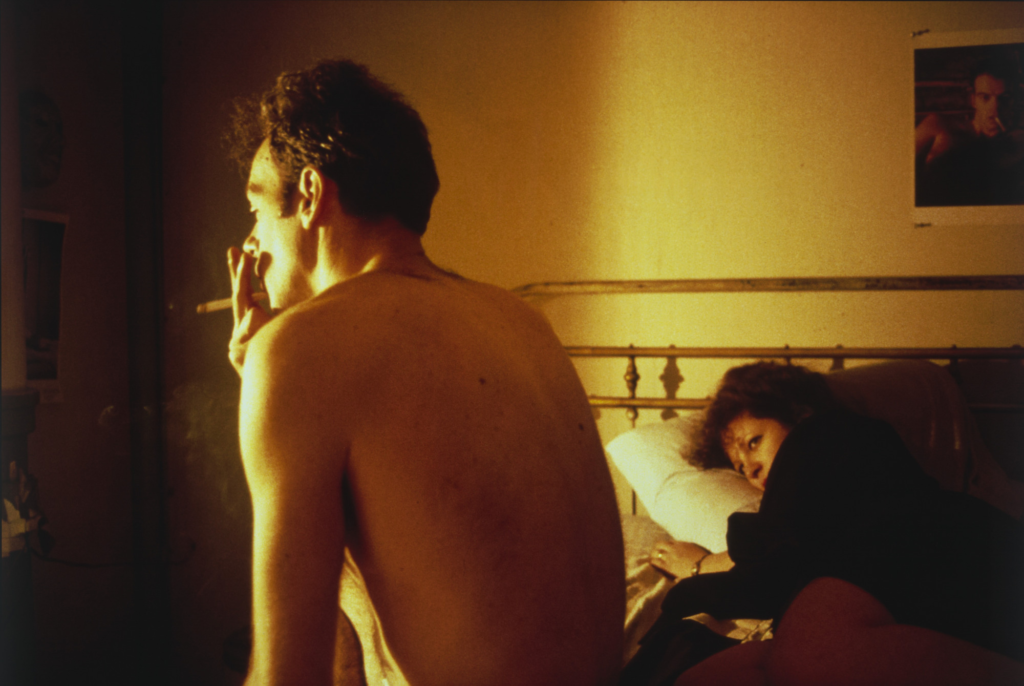
This is a film photograph, ‘Nan and Brian in bed’, by Nan Goldin taken in New York City, 1983, and is featured in her collection of photographs from ‘The Ballad of Sexual Dependency’.
There are two subjects in this photograph, Nan and Brian, and the focal point appears at first hand to be Brian – who is presented in the foreground sitting at the edge of the bed, facing the natural golden lighting seeping into the room from the window. This natural lighting creates a distinct contrast between the lighting and shadows, further emphasising this subject and establishing this choice to position herself as potentially the secondary subject within the midground/background, looking on at him, seemingly with an expression which could be read as her being disdained. Likewise, the wall behind Goldin features a photo of Brian, named ‘Brian with the Flintstones’ (1981), potentially further isolating her presence from the mise-en-scène. This composition seems to be deliberately contemplated by Goldin, as the photograph follows the rule of thirds, as Brian sits on the vertical line on the left, and Goldin sits on the vertical line on the right. This could also have been a clear choice by Goldin considering most photographs are naturally read from left to right, displaying the ‘importance’ of the subject first to be perceived within the frame. However, Goldin could also be the main focal point inside of this photo, considering the horizontal leading line of the bed frame links the two subjects and draws whoever is looking at the photo to perceive both Brian and Goldin, and a photograph being read from right to left instead disrupts this natural flow and creates tension.
